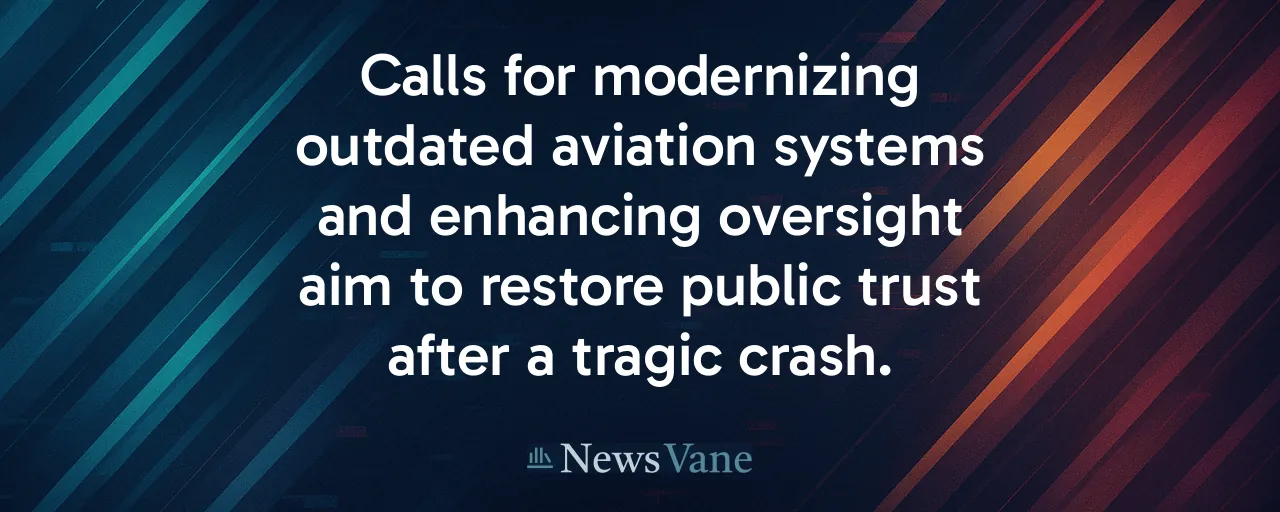A Tragedy That Shook the Capital
A January night turned catastrophic when an Army Black Hawk helicopter collided with American Airlines Flight 5342 over the Potomac River, killing 67 people near Ronald Reagan Washington National Airport. The crash stunned a city accustomed to the hum of air traffic, raising urgent questions about the safety of its crowded skies. For grieving families, the loss demands answers.
This disaster followed years of warnings. Records show 85 near-misses at Reagan National since 2020, many involving helicopters clashing with commercial jets. These incidents hinted at deeper flaws in how the National Capital Region's airspace is managed. Now, Transportation Secretary Sean P. Duffy has endorsed an independent audit to uncover why these risks persisted and how to eliminate them.
The skies above D.C. are a complex puzzle. Military helicopters, private planes, and passenger jets share tight corridors, each with unique needs. Ensuring their safe coexistence is a daunting challenge. This challenge cannot be ignored when lives are at stake.
Swift Fixes, Lingering Doubts
The Federal Aviation Administration acted fast after the crash. It banned non-essential helicopter flights near Reagan National, ended mixed helicopter-jet operations, and closed a risky helicopter route between Hains Point and the Wilson Bridge. The agency also required all aircraft to broadcast ADS-B tracking signals, added staff to the control tower, and paused Pentagon heliport operations until safety gaps are addressed.
An audit by the Department of Transportation's Office of Inspector General will probe further. It will assess whether outdated airspace rules, exemptions for military aircraft, or understaffing contributed to the tragedy. A parallel Army audit will review pilot training and coordination with civilian controllers. Bipartisan senators, alarmed by years of unaddressed close calls, insisted on these reviews to restore public trust.
Despite these steps, some wonder if they tackle the core problem. Helicopters and jets have clashed in D.C.'s airspace for decades, with separation rules from the 1960s failing to keep pace. The crash has sparked calls for a broader rethink of how complex air traffic is managed in the capital.
Competing Paths to Safer Skies
The tragedy has intensified debates over aviation safety. Advocates for robust federal funding argue that understaffing, 3,500 controllers short nationwide, and outdated equipment, like 618 aging radars, demand more public investment. Recent laws added controllers and mandated longer cockpit voice recorder retention to strengthen oversight and accountability.
Others push for a market-oriented solution. They propose shifting air traffic control to a nonprofit, like Canada's Nav Canada, to accelerate upgrades. Proponents believe a business-led model could replace obsolete systems faster and hold negligent operators accountable with tougher penalties. They point to the FAA's $8 billion radar modernization plan as proof that private partnerships can deliver results.
Both perspectives see technology as critical. Global air traffic systems are adopting AI to predict conflicts and satellite navigation for precision. The FAA's push for digital communications and predictive analytics aligns with these trends. Yet disagreements over funding and structure risk delaying progress, leaving passengers in limbo.
Restoring Faith Above
Trust in the FAA's air traffic services plummeted 17 points after the crash, polls show. Open data and independent audits, like the one underway, are vital to rebuilding confidence. Past safety reforms, such as those following the 737 MAX crashes, demonstrate that transparent action can reassure the public.
Emerging tools offer promise. Real-time data platforms and AI-driven systems, like NASA's In-Time Safety System, can spot risks early. Commercial solutions that predict disruptions are already helping airlines adapt. If combined with strong oversight, these advances could transform D.C.'s airspace into a benchmark for safety.
The audit's findings will guide future laws and policies, testing the FAA's commitment to protecting travelers. As planes and helicopters navigate the capital's skies, passengers need assurance that safety comes first. The path forward hinges on accountability, innovation, and a shared resolve to prevent another tragedy.
